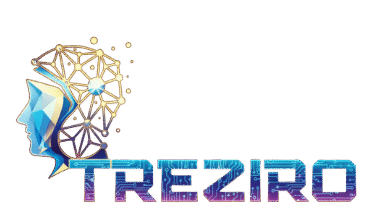Zero-Party Data Is the New Oil: How to Build Pipelines in HubSpot Without Breaking UX
Your CRM is probably sitting on a goldmine of customer insights that could transform your marketing. But most businesses are still using outdated data collection methods. Don’t get left behind, learn how to use zero-party data pipeline CRM to enhance your customer experience and skyrocket engagement without compromising UX.
Harnessing zero-party data pipeline CRM integration is the key to unlocking a new level of customer connection. Unlike first-party or third-party data, which is collected through observation, this information is given freely and intentionally by your audience. It includes preferences, purchase intentions, and personal context that customers share directly with you. As privacy concerns grow and cookieless marketing data becomes the norm, building trust through transparent data collection is no longer optional. This is where a powerful platform like HubSpot shines, allowing you to create systems that gather this valuable information without disrupting the user experience. Think of it as turning voluntary insights into a growth engine formula:
Customer Value = Intentional Data × Trust ÷ Friction
First-Party Data Marketing vs Zero-Party Data Pipeline CRM
While often discussed together, first-party and zero-party data have distinct roles. First-party data is information you collect from your own sources, like website behavior or purchase history. It tells you what a customer did. Zero-party data, however, tells you why. It’s the information a customer proactively shares, such as their communication preferences or what they hope to achieve with your product. This shift towards privacy-first data collection empowers customers and provides you with hyper-relevant insights for personalization.
FAQ: What is the main difference between first-party and zero-party data?
- First-party data is observational (e.g., pages visited), while zero-party data is intentionally shared by the user (e.g., quiz answers).
What is HubSpot and How Can It Help?
HubSpot is an all-in-one platform that combines marketing, sales, and service tools. Its strength lies in centralizing customer information and automating workflows, making it the perfect environment for building your data pipelines. Instead of disjointed tools, you have a single source of truth. By using its features, you can implement effective lead management software strategies that capture customer information seamlessly. The goal is to make data collection feel like a natural part of the customer journey, not an interrogation. This is the foundation of modern CRM data enrichment strategies.
You can use HubSpot to:
- Create interactive quizzes and polls to gather preferences.
- Build dynamic forms that only ask for relevant information.
- Develop surveys to collect feedback on products and services.
- Use its email management software to send targeted preference center updates.
FAQ: Can I use HubSpot for more than just marketing?
Yes, HubSpot offers integrated tools for sales, customer service, and content management, creating a unified view of the customer.
Building Your Data Pipeline in HubSpot Without Harming UX
The secret to collecting zero-party data is to offer value in exchange. People are willing to share information if it leads to a better, more personalized experience. Forgetting this trade-off is where many businesses fail, creating clunky forms and surveys that frustrate users. A well-designed pipeline respects the user’s time and attention.
For example, you can use HubSpot’s progressive profiling feature in its forms. This allows you to ask for different information each time a known contact fills out a form. On their first visit, ask for their name and email. Next, ask about their industry or interests. This gradual approach feels less intrusive and builds a richer customer profile over time. You are turning your lead capture process into an ongoing conversation, which is a core tenet of effective privacy-first data collection.
FAQ: Will asking for data annoy my website visitors?
Not if it’s done correctly. Offer value in return, such as personalized content or a better user experience, and collect it gradually to avoid friction.
The Future is Personalized and Private
The digital landscape is moving away from third-party cookies and towards a model built on consent and trust. Businesses that adapt will build stronger, more loyal customer relationships. By using zero-party data, you are not just gathering information; you are co-creating a better customer experience. This approach turns your HubSpot pipeline CRM from a simple database into a dynamic engine for growth.
Start by identifying the key information that would help you serve your customers better. Then, use the tools within HubSpot to create engaging, value-driven ways to collect it. The result will be a more effective marketing strategy, a happier customer base, and a business that is ready for the future of cookieless marketing data.
Epic takeaway formula:
Customer Delight = Σ(Value + Personalization + Trust)
One response to “Zero-Party Data Is the New Oil: How to Build Pipelines in HubSpot Without Breaking UX”
-
[…] of 2025, they redefine them. With Dell’s cutting-edge enterprise IT infrastructure, your data center will not just evolve; it will transform into a strategic asset that powers your growth for […]

Leave a Reply to Dell 2025 Servers: Built for Infinite Growth & Performance Cancel reply